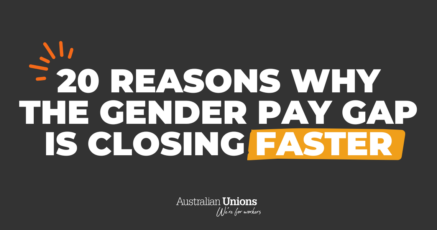How is it possible that businesses are crying out for more workers and yet 1.8 million people in Australia say they want work?
Of that 1.8 million, more than 166,000 workers are ready and willing to work but caring responsibilities prevents them from doing so. Nearly 70 percent, 166,000, are women.
That’s the findings from a new report from the Australian Council of Trade Unions, ‘Delivering Equity for Women at Work’, shows that a key barrier for many of people prevented from taking up work is caring responsibilities.
This barrier comes from a few different factors but it is easy to see how the barriers caused by gendered caring responsibilities snowball into one huge problem for working women.
If you are a woman with a child in the family, you are more likely to be their ‘primary carer’ and take paid parental leave. Already that means you have to take time off work and on a minimum wage rate, nonetheless.
Then when you do return to the workforce as a working mother, you put in a request for flexible leave. But your employer refuses and your available hours are restricted even more.
Finally, now that you are looking at childcare options so someone can look after your kid and allow you to do more work hours, the costs are so high you simply cannot afford it.
Of course, this pathway is not how it happens every time, but these are barriers that working women with child caring responsibilities constantly must think about.
It is a similar story for working women who have caring responsibilities for loved ones with disabilities or elderly family members.
With so many unfair barriers standing in the way, it comes as no surprise that women’s participation in the workforce continues to lag that of men.
Respect at work is possible: just ask a union member
The ACTU report points to a fundamental underlying cause of these sexist barriers: a profound lack of respect for women.
Gender inequality in Australian workplaces has a long history but so too does the progress union members have made to equal the playing field.
Together workers in unions have kept putting one foot in front of the other, winning increasingly better pay for women in 1902, 1969, 1972 and as recently as 2012.
This persistence and collective action are why women in unions have a much smaller gender pay gap than non-members.
With almost 2-million union members coming together to get things done, if you want to see change, we can take action together to drive that change.






SHARE:
Women want to work more, so what is standing in their way?